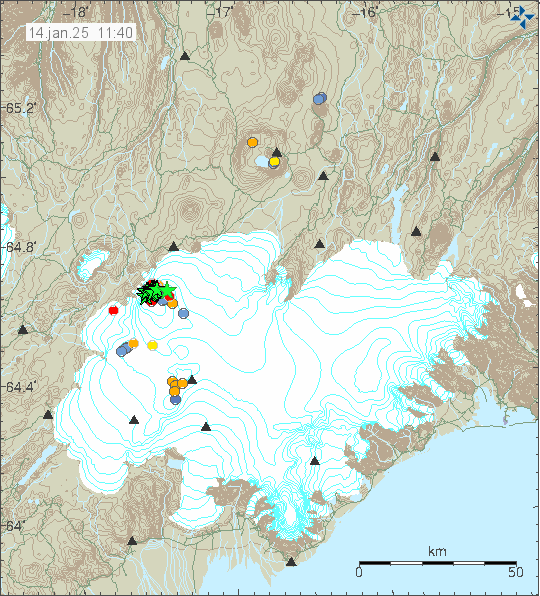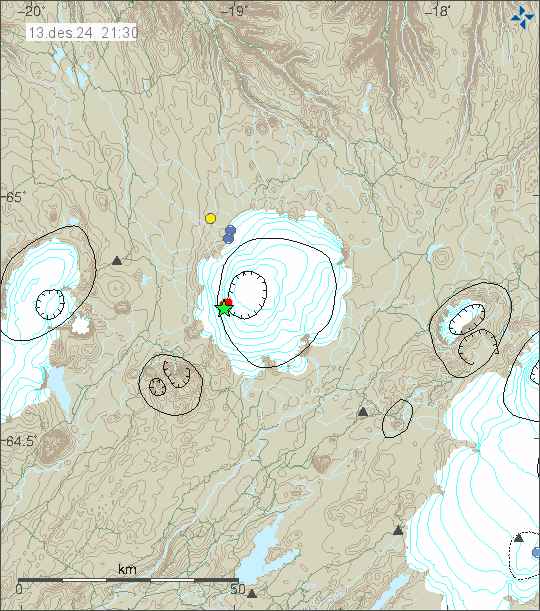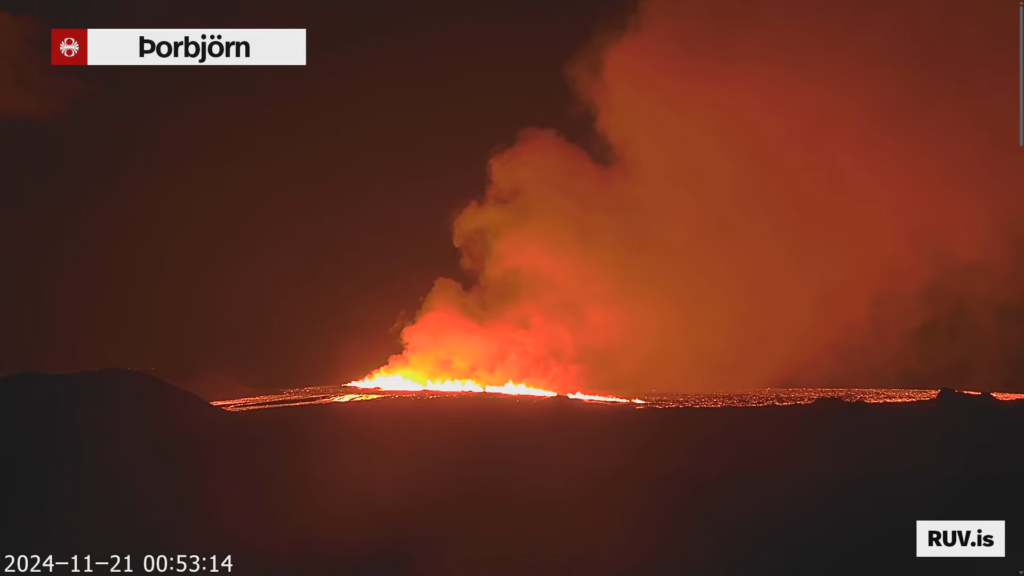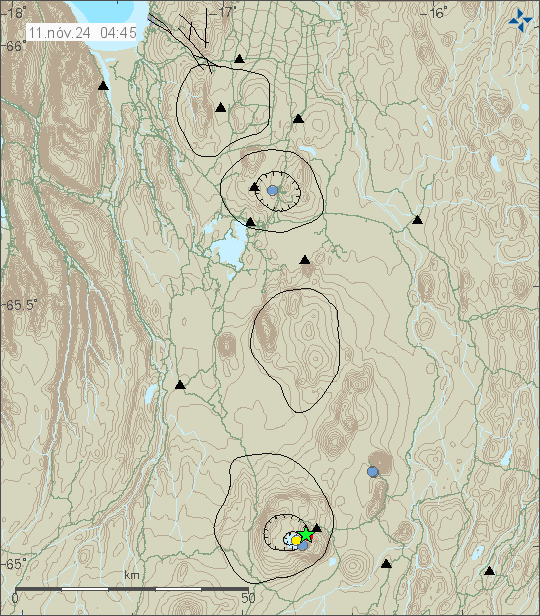Today (14-January 2025) at 06:08 UTC an dyke intrusion started in Bárðarbunga volcano. This dyke intrusion lasted until around 09:00 UTC and might still not be over, even if the activity has stopped at the writing of this article. Largest earthquakes had the magnitude of Mw5,2 (USGS, EMSC). More than a dozen earthquakes with magnitude from Mw3,0 to Mw5,0 took place in this earthquake swarm.

The main activity was in the western part of the caldera. According to the experts, this earthquake swarm looks close to what happened in Bárðarbunga volcano before it erupted in Gjálp (Wikipedia, Icelandic) in the year 1996. Then a earthquake swarm started like this, slowed down for few days before it increased again and the eruption happened. It is unclear what direction the dyke might move to, but most likely is south-west in the direction of Torfajökull volcano and Katla volcano. If that happens, such dyke activity might get those volcanoes upset or start and eruption in them.
I am going to post update as needed for Bárðarbunga volcano as this activity continues.










